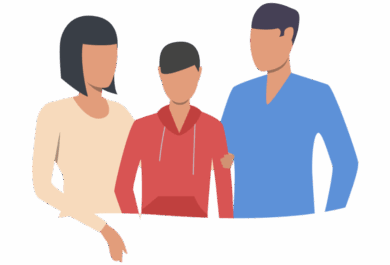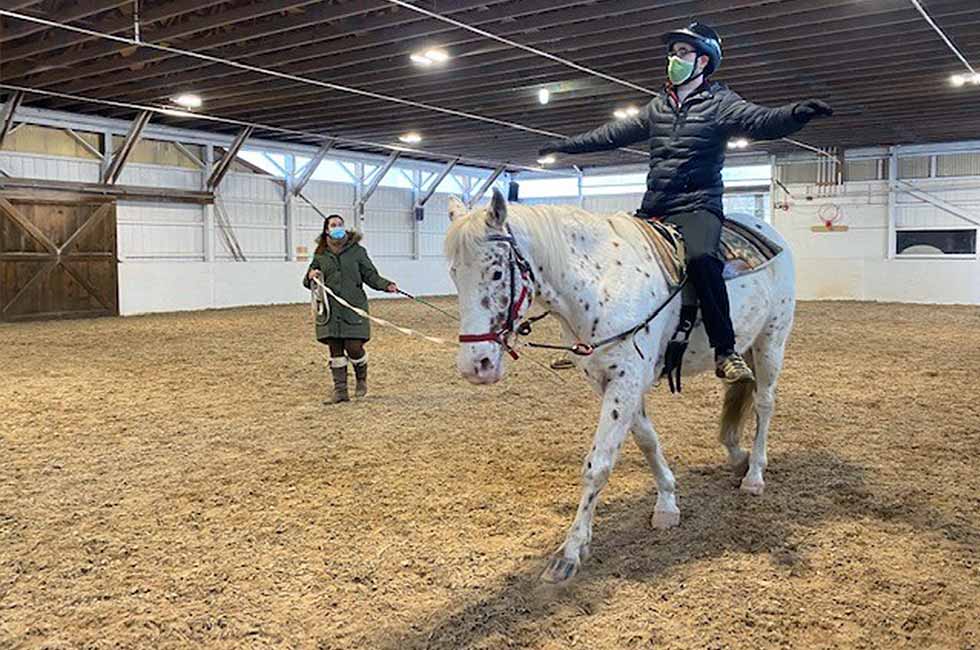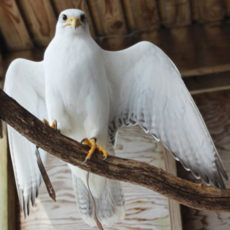Announcements


Control. Maintaining control over our emotions. Keeping control of a classroom. When does control become a negative? How does one gain control without relying on fear?
Control plays a huge role in our everyday lives, yet, sometimes control can be an illusion. Working at the farm and alongside animals will certainly teach you this. While these questions seem deeply philosophical, they are concepts that we teach our students every week when they come to riding class, especially when we can work with our students one-to-one during a lunge lesson.
You have been taking horseback riding lessons for a few weeks now and have mastered the basic skills; you sit in a saddle, put your feet in the stirrups, grab onto the leather reins, tap your feet on the horse’s side, and off you walk. Simple, you’ve got this. Now you show up to your riding lesson and the instructor has decided it’s time for something new; the lunge lesson! No saddle to sit in, no stirrups to balance your feet in, no reins to hold onto…how on earth are you supposed to ride this horse?
A lunge lesson involves a mounted rider and an instructor using a long lead rope (lunge line) attached to the horse to help direct and steer it. The riding takes place in an arena and the horse is asked to travel on a circle pattern. This style of lesson enables the instructor to safely challenge a student’s riding skills while also teaching them about concepts of control, relationships and connection. Often, pieces of riding equipment are removed and the student is pushed to utilize their natural riding aids such as their voice, legs, seat and balance. Students are amazed to learn that instead of relying on equipment to control their horse, they can encourage control by listening to the horse and working together to achieve a goal.
Lunge lessons and the concept of abandoning control can be very intimidating. No longer is the student able to pull back on the reins with their hands to stop their horse; there are no reins! Instead, students learn to shift their weight deep into their seat, while gently breathing out and saying “whoa” in low tones. Lunge lessons involve a lot of breathing exercises, teaching the student about emotional energy and relaxation. As a rider, you are able to balance and feel the horse underneath you more easily when you are relaxed and focused; the horse is better able to feel shifts in body weight and leg cues, and respond more quickly. The student and horse build a stronger bond by working together instead of one telling the other what to do. It can be very difficult to overcome that initial feeling of no control but students learn how to ask for and maintain control through teamwork and awareness. Once students learn they can communicate to the horse in a variety of ways, they often feel empowered.
Whether it is walking a dog on a leash, riding a bicycle without training wheels, or typing on a computer without looking, activities that build the skills to sense and guide action can have an empowering and enlightening effect. Letting go of that familiar control is scary, it challenges your comfort zone, but learning to trust yourself can bring out a new form of control, one based on connection, understanding and empathy.
Green Chimneys School students benefit from hands-on experiences and discover how to partner with horses both in the saddle and on the ground through safe and positive therapeutic interactions. Our Equine Education program incorporates equine welfare, active care, and teaches children the responsibility humans have toward horses. Equine activities are part of the school day and are also can be incorporated into therapy and recreational programs for childing in residential treatment. Such experiences enhance our students’ social, emotional, physical, and academic growth by giving them a place to develop new skills. Learn more about how nature and animals are at the foundation of our approach to special education

Crowned the best for falconry in medieval times, gyrfalcons were once reserved for kings. As the largest falcon in the world, with exquisite plumage ranging from bright white to deep charcoal, gyrs are revered for their powerful skill of flight. Their long wings make hunting waterfowl from 3,000-feet-high a feasible and fantastical feat. This falcon was flown in the sport of falconry for several years.